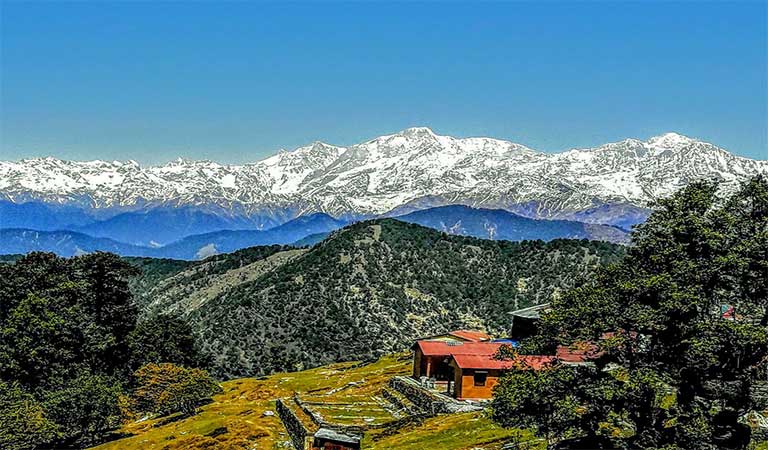Chopta Trekking Difficulty: An In-Depth Guide
The Chopta Tungnath Trek is a moderate-level trek suitable for both beginners and experienced trekkers. The trek to Tungnath Temple Trek, which rises to 3,680 meters, poses some challenges due to altitude and weather. Factors like trail conditions, altitude acclimatization, and physical endurance play key roles in the Chopta trekking difficulty. During Winter Trekking in Uttarakhand, snow-covered trails increase the difficulty, requiring proper gear.
The Chandrashila Summit Trek offers panoramic views, and it’s an essential part of Chopta Trekking Packages from Delhi. For adventure seekers, Adventure Trekking in Uttarakhand offers exhilarating experiences, but the trek requires careful preparation, including choosing the right Chopta Trek Itinerary. Participating in Chopta Group Tour Packages or Chopta Camping Packages ensures better support and camaraderie throughout the journey, making it easier to manage the challenges of the trek. Overall, the Chopta Tungnath Trek is rewarding with proper preparation.
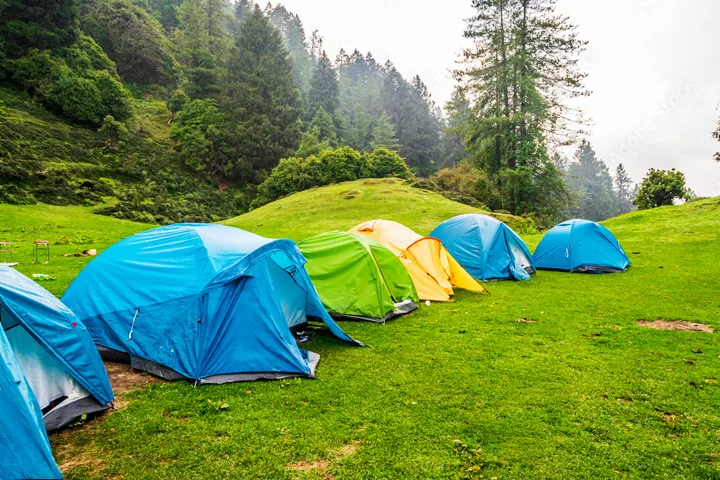
Key challenges include altitude acclimatization, especially as you ascend to Tungnath Temple, which is one of the highest Shiva temples in the world. The weather can be unpredictable, with temperatures dropping significantly at night, so proper gear is essential. The best time for trekking is from April to June and September to November, avoiding the monsoon season when trails can become slippery and difficult.
Overall, while the trek presents some challenges, the mesmerizing vistas and serene environment make Chopta an unforgettable trekking destination for all skill levels. Prepare adequately, and you’ll be rewarded with stunning natural beauty and a sense of accomplishment.
Understanding Chopta
Chopta, often referred to as a picturesque trekking base, is a stunning destination in Uttarakhand, nestled in the Himalayas at an elevation of about 2,680 meters. Known for its breathtaking meadows and panoramic views of snow-capped peaks like Nanda Devi and Trishul, Chopta attracts nature lovers and trekkers alike. It serves as a base for popular trekking routes, including the trek to Tungnath Temple Trek, located about 3.5 kilometers from Chopta. From Tungnath, trekkers can continue to Chandrashila Summit Trek for stunning panoramic views, making it a rewarding experience.
Chopta is accessible from Haridwar and Rishikesh, with the journey to Chopta beginning at Sari Village, just 20 kilometers away. The area is renowned for its vibrant flora, particularly during spring when wildflowers blanket the meadows.

The best times to visit are from April to June and September to November, avoiding the monsoon season when trails can become slippery. With its captivating landscapes and serene environment, Chopta is an ideal destination for both seasoned trekkers and those seeking tranquility in nature. Many travelers explore the region through Chopta Camping Packages for a more immersive experience.nment, Chopta is an ideal destination for both seasoned trekkers and those seeking tranquility in nature, offering a memorable escape into the Himalayan wilderness. Many travelers explore the region through Chopta Camping Packages for a more immersive experience.
Factors Affecting Chopta Trekking Difficulty
1. Altitude
One of the most significant factors influencing the difficulty of the Chopta trek is altitude. Chopta itself is situated at approximately 2,680 meters (8,790 feet) above sea level. As trekkers ascend towards Tungnath, which is about 3,680 meters (12,073 feet), they may experience altitude-related issues.
Acclimatization
Acclimatization is vital when trekking at high altitudes. The body needs time to adjust to reduced oxygen levels, and failure to acclimatize can lead to altitude sickness. Symptoms can range from mild headaches and nausea to severe complications requiring immediate descent. Trekkers should plan their itinerary to include rest days and gradual ascents to mitigate altitude-related risks.
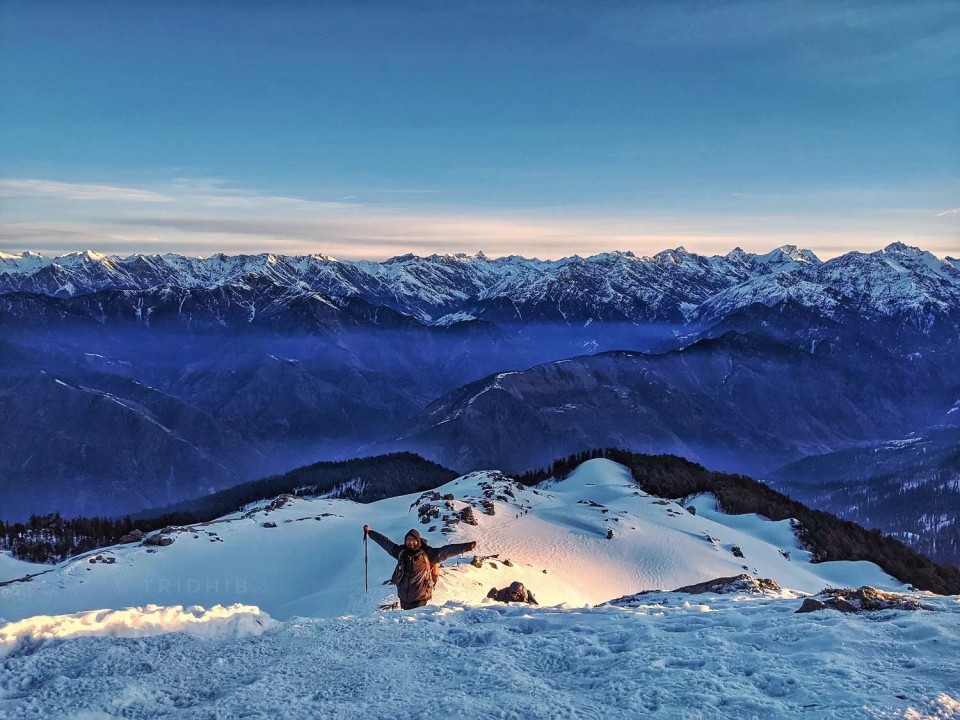
Signs of Altitude Sickness
Trekkers should be aware of the signs of altitude sickness, which include:
- Headaches
- Nausea or vomiting
- Dizziness or light-headedness
- Fatigue or weakness
- Difficulty sleeping
If symptoms arise, it is crucial to descend to a lower altitude and seek medical assistance if necessary.
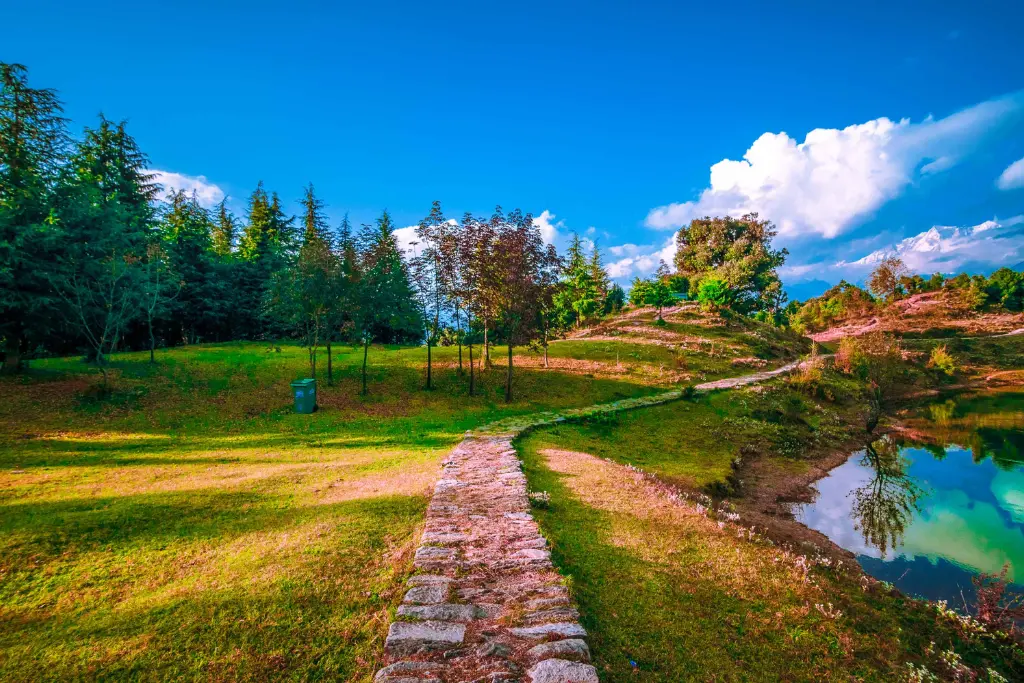
2. Trail Conditions
The condition of the trekking trails is another key factor affecting difficulty. The paths to Chopta and beyond can vary significantly based on several elements:
Terrain Type
The trek involves a mix of terrain, including well-defined paths, steep inclines, rocky sections, and occasional slippery areas. The trek to Tungnath, in particular, features a steep ascent, which can be taxing for many trekkers.
Seasonal Variability
Trail conditions can change dramatically with the seasons. During the spring and summer months, trails are usually clear and well-maintained. However, the monsoon season (June to September) can bring heavy rainfall, leading to muddy and slippery trails. In winter, snow can cover the paths, making navigation challenging. Trekkers should be prepared for the specific conditions of the season they choose to hike in, especially during Winter Trekking in Uttarakhand.

3. Weather
Chopta’s weather is notoriously unpredictable, which can significantly impact trekking difficulty.
Temperature Fluctuations
Temperatures can vary greatly between day and night, especially in the mountains. During the day, it may feel warm enough for short sleeves, while nighttime temperatures can drop close to freezing. Proper layering of clothing is essential to adjust to these temperature changes.
Rain and Snow
Rain can lead to treacherous conditions, especially on steep sections of the trail. Snow, while beautiful, can make the paths slippery and increase the risk of falls. Trekkers must be aware of the weather forecast and prepare accordingly, potentially carrying rain gear and appropriate footwear.
4. Fitness Level
The physical fitness of trekkers plays a crucial role in determining how difficult the trek feels.
Endurance and Strength
Trekking in the Himalayas requires a certain level of cardiovascular endurance and leg strength. Trekkers should engage in physical training prior to their trip, focusing on activities that build stamina, such as hiking, running, or cycling. Core strength exercises can also help improve balance and stability on uneven terrain, essential for those considering Adventure Tours in Chopta.
Experience Level
Experience in trekking also matters. Novice trekkers may find the ascent challenging, particularly in terms of managing fatigue and navigating the terrain. In contrast, seasoned trekkers may feel more comfortable and equipped to handle obstacles, making the trek less daunting for them. Those looking for the Best Trekking Packages should consider their experience level when choosing a route.
5. Duration of the Trek
The overall duration of the trek can influence its difficulty.
Daily Distances
The trek from Sari Village to Chopta is approximately 10 kilometers and takes about 6-7 hours. This distance, combined with elevation gain, can lead to significant fatigue. The trek from Chopta to Tungnath adds another 3.5 kilometers (round trip), making it essential for trekkers to pace themselves, especially during Chopta Group Tours.
Rest and Breaks
Incorporating regular breaks into the trek can help manage fatigue. Trekkers should listen to their bodies and rest as needed, ensuring they stay hydrated and energized throughout the journey. Those participating in Chopta Group Tour Packages can benefit from shared experiences and support.
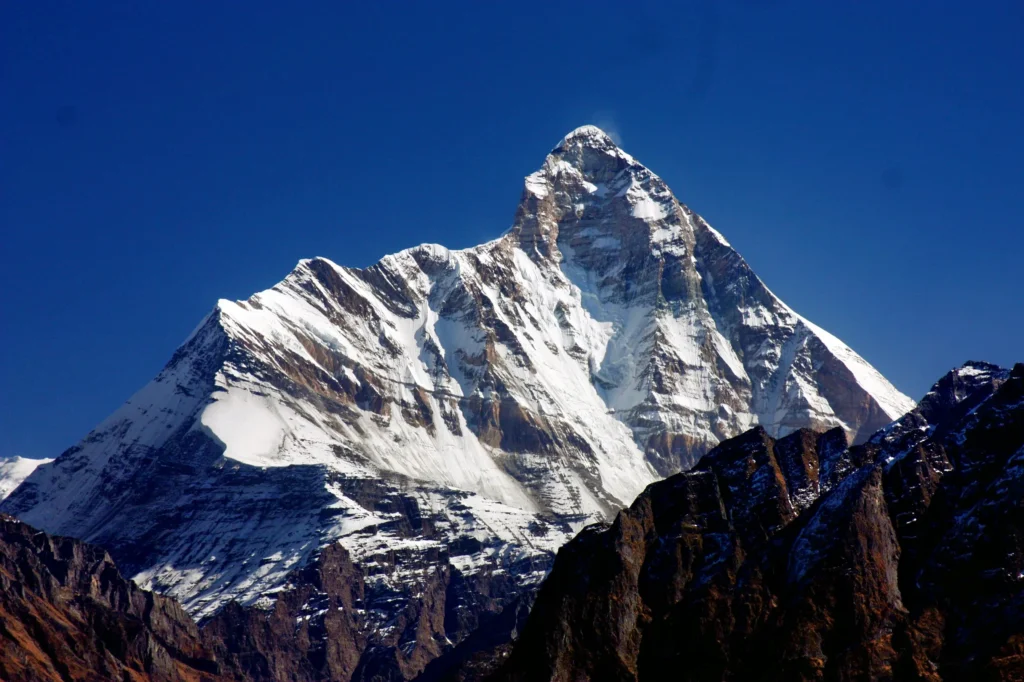
6. Preparation and Gear
Proper preparation is crucial for a successful trekking experience. The right gear can make a substantial difference in comfort and safety.
Clothing
Layering is key when dressing for the trek. Trekkers should wear moisture-wicking base layers, insulating mid-layers, and waterproof outer layers to accommodate changing weather conditions.
Footwear
Quality trekking shoes or boots with good grip are essential. Proper footwear can help prevent slips and blisters, enhancing overall comfort during the trek.
Essential Gear
Other important items include:
- A sturdy backpack to carry supplies
- Trekking poles for added stability
- First-aid kit for minor injuries
- Navigation tools (maps or GPS devices)
- Water purification methods (tablets or filters)
7. Group Dynamics
The dynamics within a trekking group can also affect the difficulty of the trek.
Group Size and Composition
Smaller groups may allow for more personalized pacing and support, while larger groups can present challenges in coordination. Mixed experience levels can create a disparity in pace, which may slow down more experienced trekkers or create pressure on beginners.
Motivation and Support
Trekking with a supportive group can significantly enhance the experience. Encouragement from fellow trekkers can help individuals push through challenging sections. Conversely, negative group dynamics can lead to frustration and decreased morale.
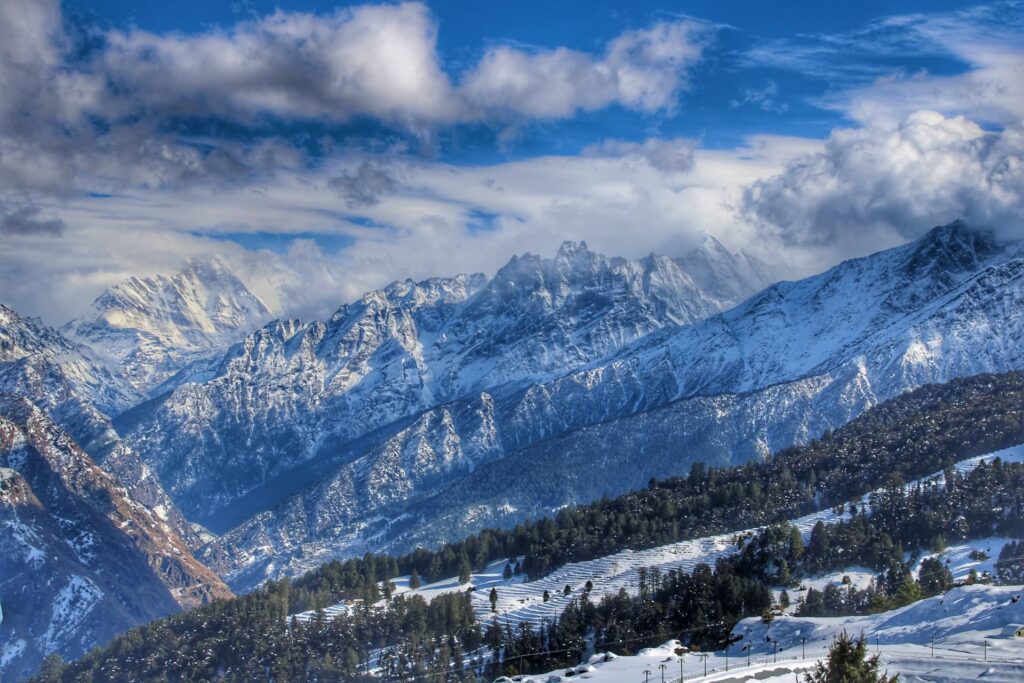
8. Personal Mindset
The mental aspect of trekking is often overlooked but is just as crucial as physical preparedness.
Mental Resilience
Trekking in challenging conditions requires mental fortitude. Trekkers should prepare themselves for physical and psychological challenges, such as fatigue, discomfort, and weather changes. Maintaining a positive attitude can help overcome difficulties.
Setting Realistic Expectations
Understanding one’s limits and setting realistic goals is essential. Overambitious plans can lead to burnout and disappointment. Acknowledging the beauty of the journey, rather than solely focusing on the destination, can enhance the trekking experience.
9. Wildlife and Nature
While encountering wildlife can add excitement to the trek, it can also introduce challenges.
Flora and Fauna
Chopta is home to diverse wildlife, including species like the Himalayan black bear, musk deer, and various bird species. Trekkers should be aware of their surroundings and respectful of wildlife habitats.
Natural Hazards
Natural hazards, such as landslides or falling rocks, can pose risks during the trek. Staying vigilant and adhering to marked trails can help mitigate these dangers.
Trekking Routes in Chopta
Chopta, a picturesque destination in the Uttarakhand Himalayas, is renowned for its stunning views, lush meadows, and serene environment. As a base for several trekking routes, it offers various levels of difficulty and experiences, making it a favored spot for Chopta Tour Package. This guide delves into the most popular trekking routes in Chopta, detailing the experience each offers, key highlights, and tips for trekkers.
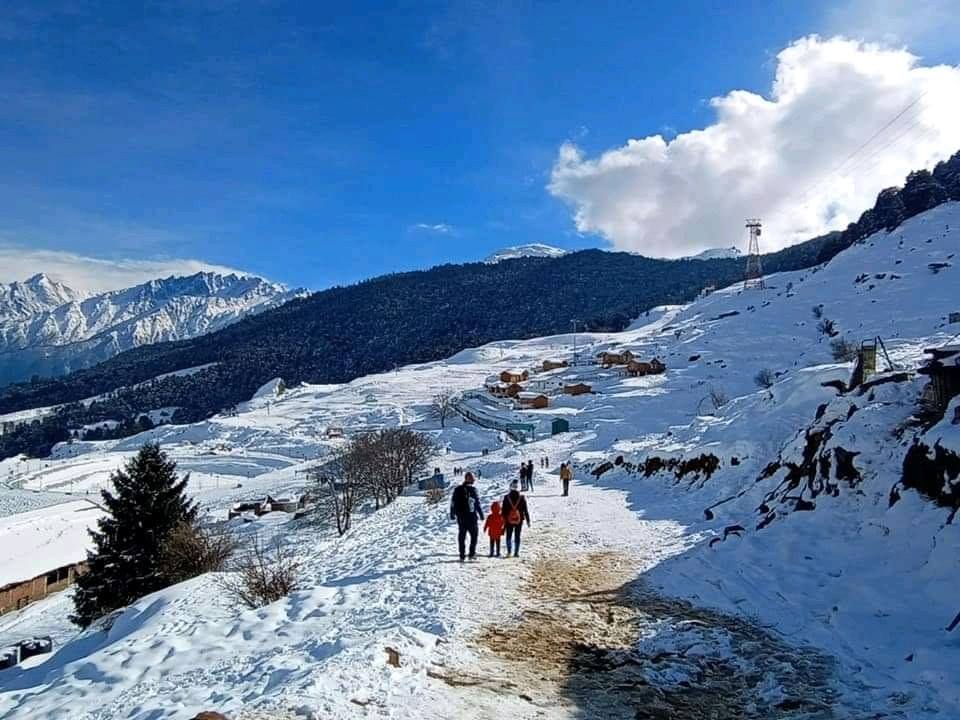
1. Chopta to Tungnath
Overview
The trek from Chopta to Tungnath is one of the most popular routes in the region, known for its relatively moderate difficulty and spiritual significance. Tungnath is one of the Panch Kedars, the five temples dedicated to Lord Shiva, and is the highest Shiva temple in the world, located at an altitude of about 3,680 meters (12,073 feet).
Trek Details
- Distance: Approximately 3.5 km one way
- Duration: 2-3 hours ascent; 1.5-2 hours descent
- Difficulty Level: Moderate
Trail Description
Starting from Chopta, the trail winds through beautiful pine forests and lush meadows. The path is well-defined and relatively steep, making it essential for trekkers to maintain a steady pace. Along the way, you’ll encounter vibrant rhododendron flowers during spring, adding to the trek’s charm.
As you ascend, the views become more breathtaking, with panoramic vistas of the surrounding Himalayan peaks. The final stretch leads you to the Tungnath Temple, where trekkers can soak in the spiritual atmosphere and enjoy the stunning landscape.
Highlights
- Tungnath Temple: An ancient temple with intricate architecture.
- Scenic Views: Capture views of the Himalayan ranges, including Nanda Devi and Chaukhamba.
- Wildlife: Spot various birds and possibly other wildlife along the trail.
Tips
- Best Time to Visit: April to June and September to November.
- Preparation: Carry water and snacks, and wear comfortable trekking shoes.
- Respect the Environment: Follow Leave No Trace principles.
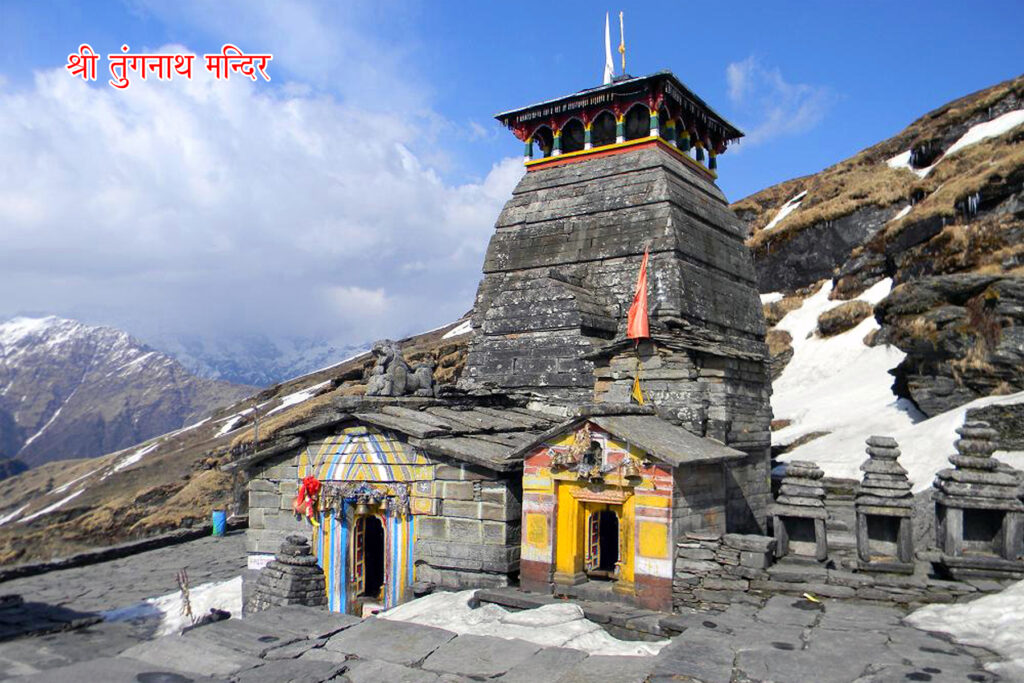
2. Tungnath to Chandrashila
Overview
For those looking for a more challenging trek, the route from Tungnath to Chandrashila Summit Trek is an excellent choice. At an elevation of 4,000 meters (13,123 feet), Chandrashila offers breathtaking 360-degree views of the surrounding mountains.
Trek Details
- Distance: Approximately 1.5 km one way
- Duration: 1-1.5 hours ascent; 30-45 minutes descent
- Difficulty Level: Moderate to challenging
Trail Description
The trek from Tungnath to Chandrashila is steeper than the previous section, with rocky paths and narrow trails. The ascent is rewarding, as trekkers are greeted with stunning vistas as they approach the summit. The final ascent involves some rocky terrain, requiring careful footing.
Highlights
- Summit Views: Experience panoramic views of peaks such as Nanda Devi, Trishul, and Kedarnath.
- Sacred Spot: The summit is considered a sacred site, and many trekkers meditate here.
- Sunrise/Sunset: Witnessing the sunrise or sunset from the peak is a breathtaking experience.
Tips
- Acclimatization: Ensure proper acclimatization to handle the altitude.
- Safety Gear: Consider using trekking poles for added stability on the rocky sections.
- Timing: Start early to avoid crowds and enjoy the tranquility of the peak.
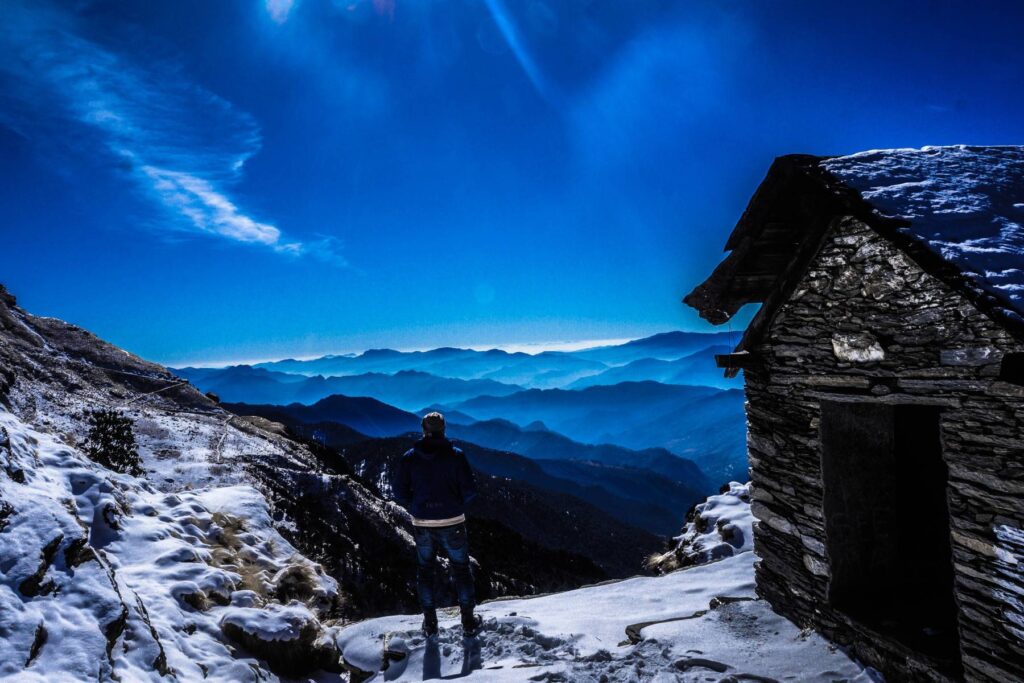
3. Chopta to Deoria Tal
Overview
Deoria Tal is a serene lake situated about 3 kilometers from Chopta, known for its crystal-clear waters reflecting the majestic Chaukhamba peaks. This trek is ideal for those looking for a shorter and more relaxed trek, perfect for families and beginners.
Trek Details
- Distance: Approximately 3 km one way
- Duration: 1.5-2 hours ascent; 1-1.5 hours descent
- Difficulty Level: Easy to moderate
Trail Description
The trail to Deoria Tal begins from Chopta and meanders through lush meadows and dense forests. The path is well-marked and relatively flat, making it accessible for most trekkers. As you near the lake, the surroundings open up to reveal the stunning view of the water with the mountains in the background.
Highlights
- Tranquil Lake: Enjoy the serene atmosphere and the picturesque reflections in the lake.
- Camping Opportunities: Many trekkers camp by the lakeside, providing an excellent opportunity for stargazing.
- Wildlife Spotting: The area is rich in biodiversity, and you may spot various bird species.
Tips
- Best Time to Visit: April to June and September to November.
- Camping Gear: If planning to camp, bring your own camping gear and food supplies.
- Photography: Don’t forget your camera for stunning reflections and landscapes.
4. Chopta to Baniyakund
Overview
The trek to Baniyakund is a lesser-known route that offers a more off-the-beaten-path experience. Located around 7 kilometers from Chopta, Baniyakund is a beautiful meadow with fewer crowds, making it perfect for solitude seekers.
Trek Details
- Distance: Approximately 7 km one way
- Duration: 4-5 hours ascent; 2-3 hours descent
- Difficulty Level: Moderate
Trail Description
The trail to Baniyakund features a gradual ascent through pine forests and meadows. The less-traveled path offers a chance to connect with nature and witness the tranquility of the Himalayas. Along the way, trekkers may come across various local flora and fauna.
Highlights
- Secluded Meadows: Enjoy the peaceful environment away from the crowds.
- Picnic Spot: A perfect location for a picnic surrounded by nature.
- Stargazing: The clear skies at night make it an excellent spot for stargazing.
Tips
- Pack Food: Bring enough food and water, as facilities are limited.
- Navigation: A map or GPS device can be helpful, as this route is less frequented.
- Wildlife Awareness: Be cautious of your surroundings, as wildlife sightings are possible.

5. Chopta to Sari Village via Mandal
Overview
This route offers a unique blend of culture and natural beauty, connecting Chopta with the quaint village of Sari. The trek takes you through lush landscapes and local villages, providing insight into the rural life of Uttarakhand.
Trek Details
- Distance: Approximately 9 km one way
- Duration: 4-5 hours ascent; 3-4 hours descent
- Difficulty Level: Moderate
Trail Description
The trek begins from Chopta, descending towards Mandal village. The path meanders through beautiful forests and terraced fields, showcasing the region’s agricultural practices. Upon reaching Sari, trekkers can witness traditional Uttarakhandi culture and hospitality.
Highlights
- Cultural Experience: Interact with locals and learn about their way of life.
- Scenic Views: Enjoy views of terraced fields and the surrounding hills.
- Local Cuisine: Try traditional dishes at local eateries in Sari.
Tips
- Respect Local Customs: Be mindful of local traditions and customs while interacting with villagers.
- Cash for Transactions: Carry cash, as many local shops may not accept cards.
- Guided Tours: Consider hiring a local guide for a more enriching experience.
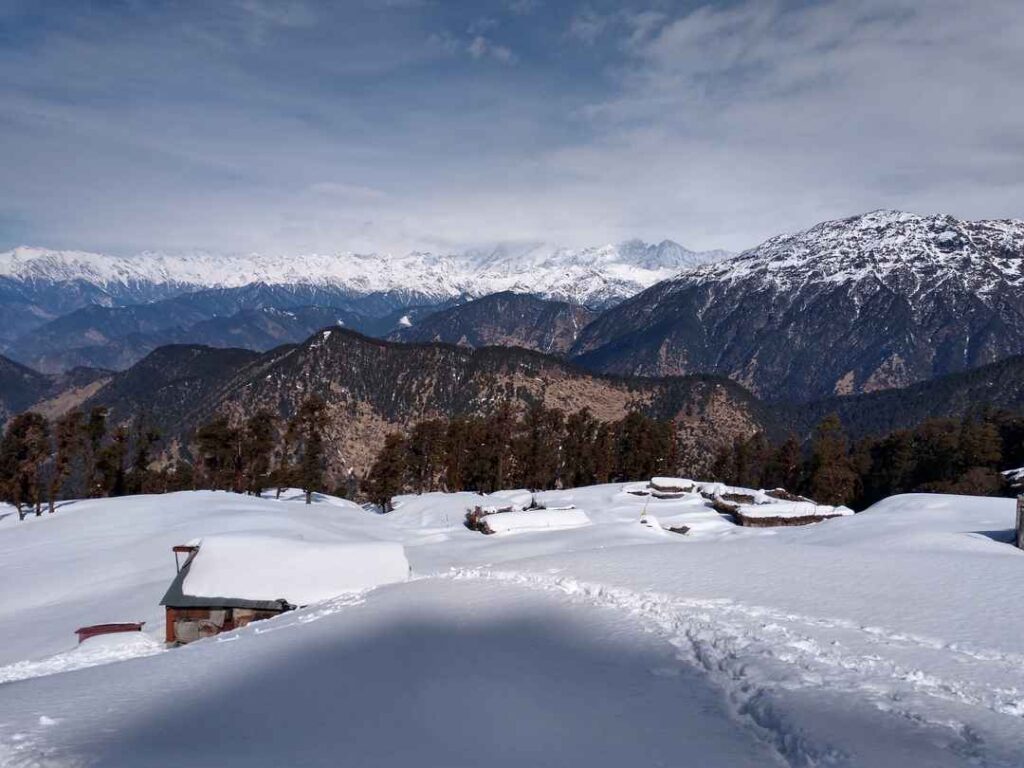
6. Chopta to Kedarnath (via Gaurikund)
Overview
For the adventurous trekker, the route from Chopta to Kedarnath is a challenging but rewarding option. Kedarnath is one of the holiest shrines in Hinduism, dedicated to Lord Shiva, and is situated at an altitude of 3,583 meters (11,755 feet).
Trek Details
- Distance: Approximately 20 km one way from Chopta to Gaurikund, then 14 km to Kedarnath
- Duration: 7-9 hours total
- Difficulty Level: Challenging
Trail Description
This trek combines scenic beauty with spiritual significance. The initial trek to Gaurikund is relatively easier, but the ascent to Kedarnath involves steep paths and rugged terrain. The final stretch is well-trodden, as it is a popular pilgrimage route.
Highlights
- Kedarnath Temple: Visit the ancient temple set against a dramatic mountain backdrop.
- Pilgrimage Experience: Witness the rituals and spirituality that define this sacred site.
- Stunning Landscapes: The route offers breathtaking views of the surrounding peaks and valleys.
Tips
Weather Check: Always check the weather before heading out, as conditions can change rapidly.s you to Deoria Tal, a beautiful lake surrounded by dense forests. The trail involves a gradual ascent and is suitable for those looking for a moderately challenging trek.
Physical Fitness: Ensure you are physically prepared for a long and strenuous trek.
Accommodation: Book accommodations in advance in Kedarnath, especially during the pilgrimage season.
Preparation for the Trek
To navigate the Chopta trekking difficulty, proper preparation is key. Here are some tips to help you get ready for your adventure:
- Physical Fitness: Ensure you are physically fit before attempting the trek. Regular cardio workouts, hiking, and strength training can significantly enhance your stamina and endurance.
- Acclimatization: Spend a day in Chopta to acclimatize to the altitude. This can help mitigate the effects of altitude sickness and make your trek more enjoyable.
- Gear and Equipment: Invest in good-quality trekking gear, including sturdy shoes, warm clothing, and essential trekking equipment. Having the right gear can greatly affect your comfort and performance on the trail.
- Hydration and Nutrition: Stay hydrated throughout your trek and carry energy-boosting snacks. Proper nutrition plays a significant role in managing Chopta trekking difficulty.
Managing Challenges on the Trek
While the Chopta trekking difficulty is manageable for most, you may encounter challenges along the way. Here’s how to address some common issues during your Chopta Tour Package adventure:
Altitude Sickness: If you experience symptoms like headache or dizziness, take a break, hydrate, and descend if necessary. Listen to your body, especially when undertaking the Tungnath Temple Trek or Chandrashila Summit Trek, where elevation changes can be significant.
Weather Changes: The weather in the mountains can be unpredictable. Always check the forecast and be prepared for sudden changes, particularly when planning your Chopta camping packages. Carry rain gear and warm clothing to stay comfortable.
- hysical Exhaustion: Take regular breaks to rest and recharge during your Chopta Tungnath Trek. Pacing yourself can make the trek more enjoyable and help manage fatigue. If you’re on one of the Chopta trekking packages from Delhi, ensure you’ve allocated enough time for acclimatization.
- Group Dynamics: If you’re part of a Chopta Group Tour, communicate with your team about your comfort level and challenges you face. Shared experiences can enhance your trekking adventure.
- Navigation Challenges: For those on Budget Chopta Packages or Corporate Chopta Packages, having a Tungnath trekking guide can be invaluable. Guides can help with navigation and offer insights into the area’s rich biodiversity and cultural significance.
- Resting Points: Plan for resting points, especially on longer treks like the Chopta Chandrashila Trek. Utilize these breaks for snacks and hydration, ensuring you maintain energy levels for the Chopta Winter Trek.
- Self-Care: After a long day, indulge in self-care by resting adequately and stretching to prevent muscle soreness. If you’re camping, consider the Deoriatal camping packages that offer serene spots for relaxation after an adventurous day.

Conclusion
In conclusion, understanding Chopta trekking difficulty is essential for a successful trekking experience. The treks around Chopta offer something for everyone, from beginners to seasoned trekkers. By assessing the various factors influencing the difficulty level, preparing adequate and being mindful of potential challenges, you can enjoy a memorable adventure in this stunning region of Uttarakhand.
By being mindful of these challenges and preparing adequately, you can enjoy an unforgettable experience in this stunning region of Uttarakhand, filled with opportunities for adventure tours in Chopta and Himalayan treks. Whether you’re interested in a Chopta trek itinerary or exploring various Chopta camping packages, being well-prepared can enhance your adventure significantly.

